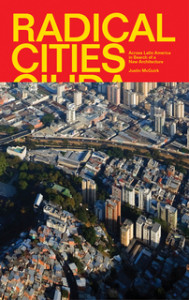Alex Park – Has This Chilean Architect Figured Out How To Fix Slums?
No comments yet m.motherjones.com. June 2014. In the United States, we tend to think of the suburbs as the historic domain of the middle class. It’s where the boomers went after fleeing the cities to accommodate their growing families (although the demographics of the suburbs are now changing).
m.motherjones.com. June 2014. In the United States, we tend to think of the suburbs as the historic domain of the middle class. It’s where the boomers went after fleeing the cities to accommodate their growing families (although the demographics of the suburbs are now changing).
But in Latin America, urban peripheries are less commonly populated by leafy suburbs for the rich than by slums for the poor. These shantytowns typically lack basic infrastructure like paved roads, sewers, and tap water. Living far from the city, residents are often forced to make long and expensive commutes.
But in the medium-sized Chilean port city of Iquique, one architect, Alejandro Aravena, had a solution: partial houses, located at the center of town, equipped with only the barest necessities—and space for residents to build on, bit by bit, as they can afford it.
When they were first built fourteen years ago for about 100 families, Aravena’s flagship projects, called the Quinta Monroy Houses, came with all the core necessities—a roof, a bathroom, a kitchen. With a little more than 300 square feet in floor space to start with, the houses were 25 percent smaller than the average public housing unit in Chile, but with an extra-wide foundation, residents had plenty of room to expand.
In his new book, Radical Cities: Across Latin America in Search of a New Architecture, journalist Justin McGuirk writes that when Aravena first launched the project through his firm, Elemental, a number of critics were appalled. They argued that the government should provide complete houses, since incomplete houses require the occupant to perform manual labor. But where some saw a failure in the making, others welcomed change. In the 1970’s, under Chile’s socialist president Salvador Allende, the government prioritized building completed public housing, even enlisting a Soviet-made pre-fabricated house factory for the job. But despite the initial gusto, the government quickly ran out of the resources to continue. In three years, the slum population rose more than 130 percent.
Since the Allende period, the government has shifted to a hybrid market-government approach, giving subsidies to the poor to buy houses and land. At the time Aravena built Quinta Monroy, the government offered $7,500 per family—usually too little to buy a complete house, but just enough to make Aravena’s stripped-down models affordable.
Read more: http://m.motherjones.com/want-reduce-sprawl-build-half-house
You May Also Like
Comments
Leave a Reply






